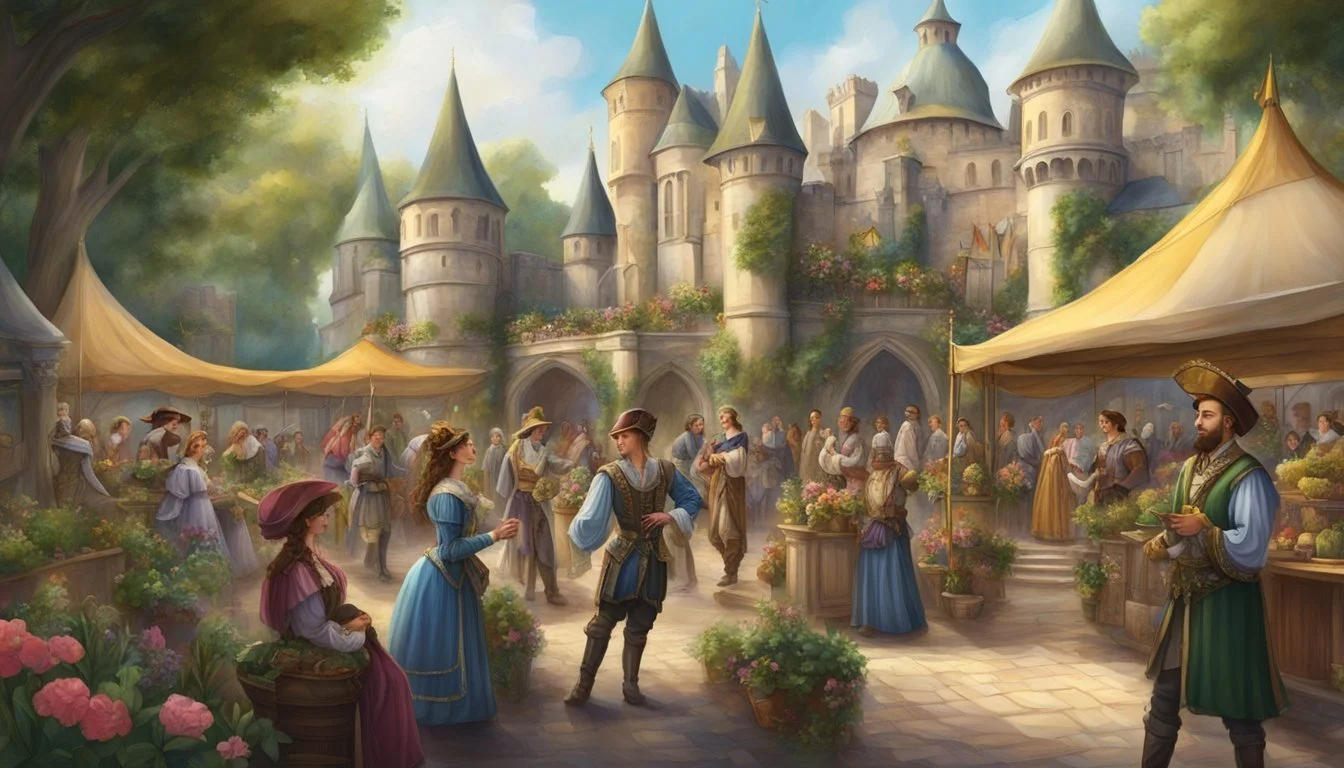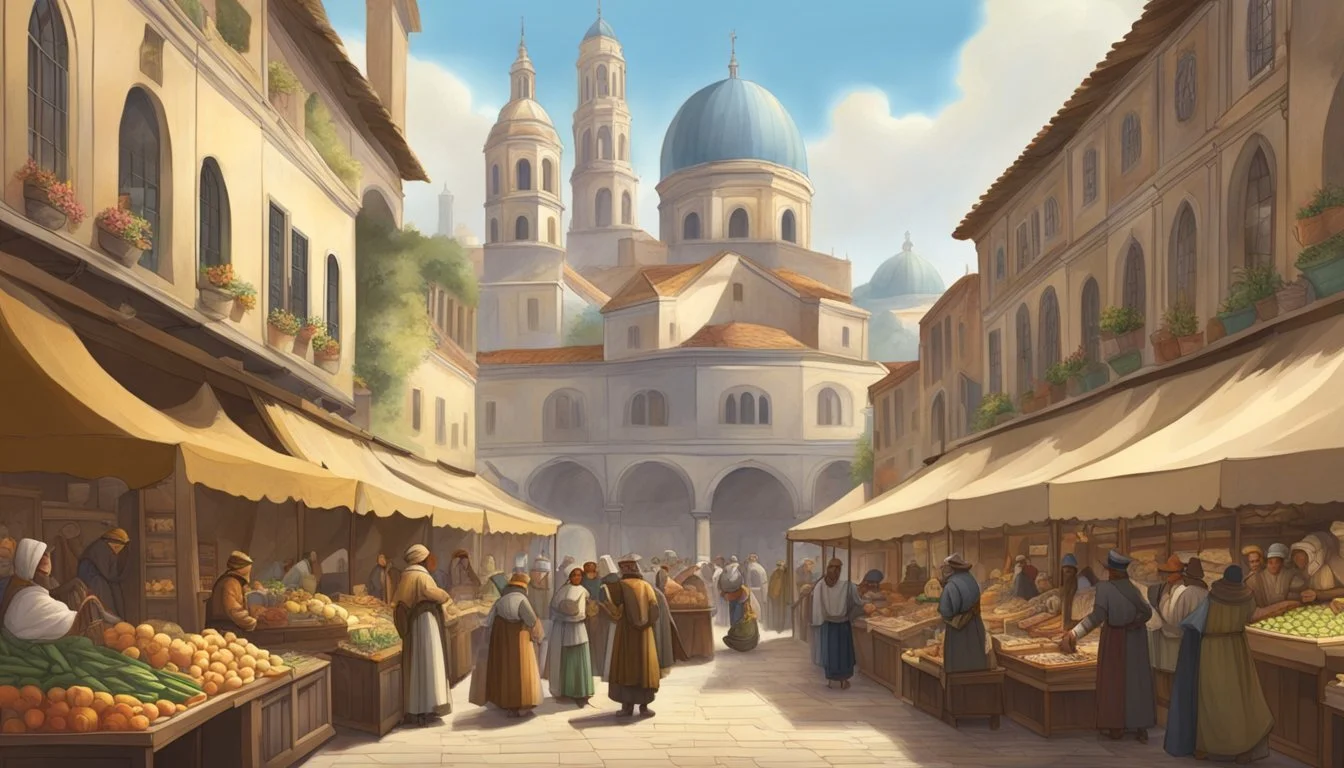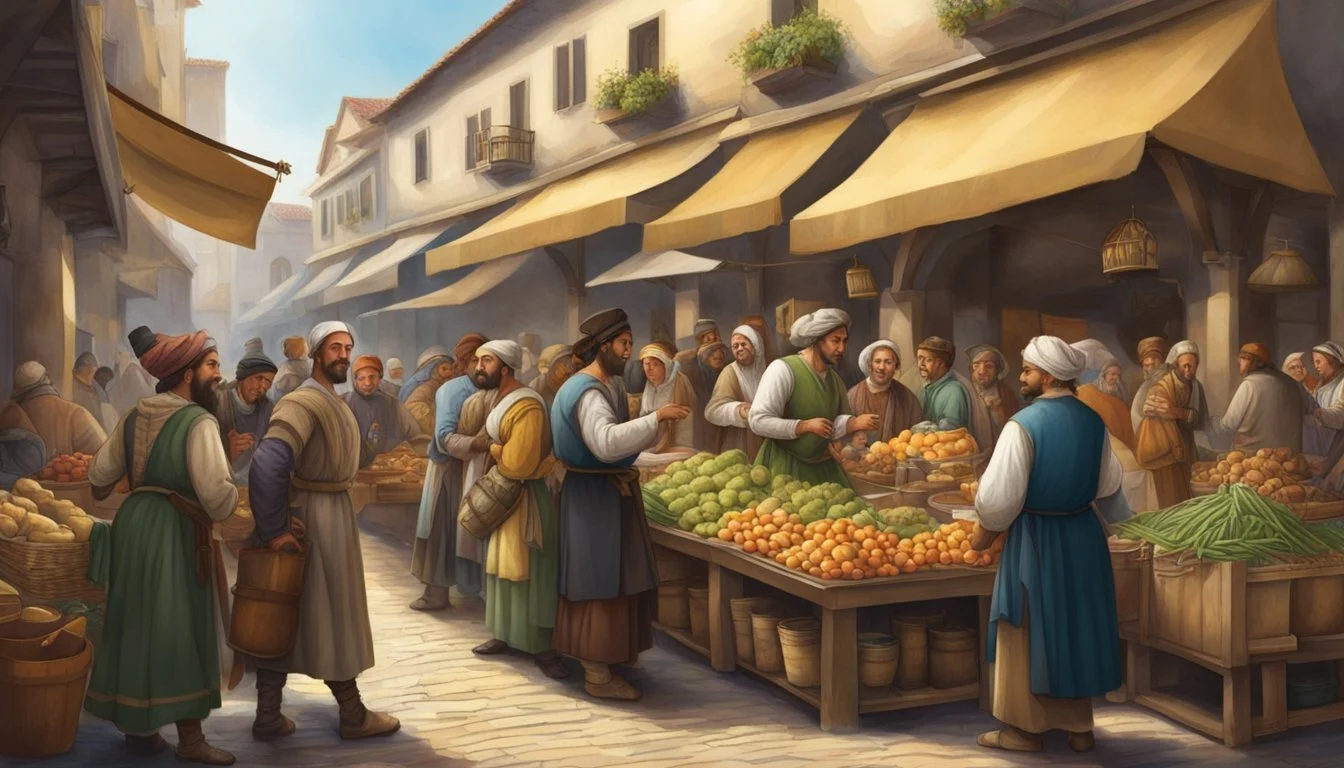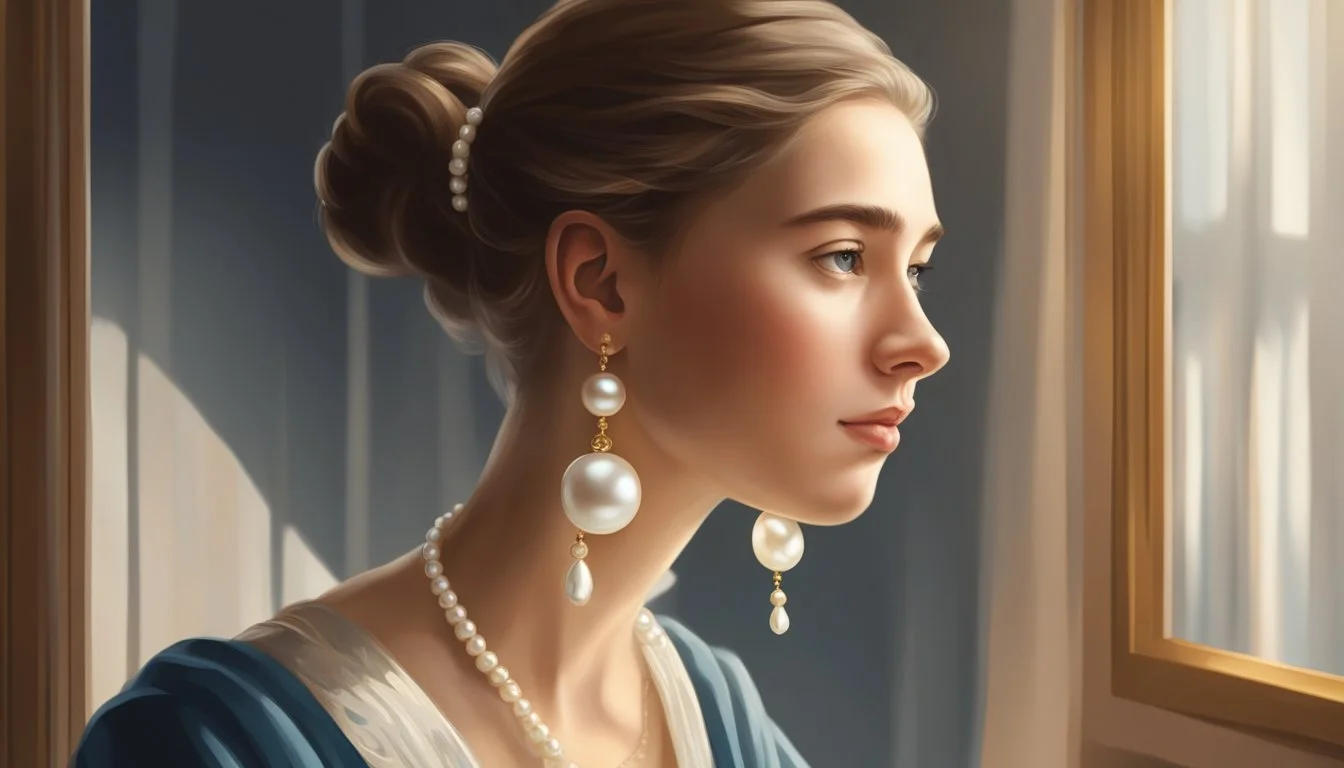9 Films Exploring the Renaissance and its Cultural Impact
A Cinematic Journey Through History
The Renaissance era marked a pivotal period of cultural rebirth in Europe, spanning from the 14th to the 17th century. This transformative time saw a resurgence of interest in classical learning and values, inspiring groundbreaking advancements in art, literature, philosophy, and science. The impact of the Renaissance continues to resonate in modern society, shaping our understanding of creativity, individualism, and intellectual pursuits.
Films set during the Renaissance offer viewers a captivating glimpse into this influential period, bringing to life its historical figures, artistic achievements, and social dynamics. Through stunning visuals and compelling storytelling, these movies transport audiences to a world of opulent palaces, bustling city-states, and revolutionary ideas. From adaptations of Shakespeare's plays to biopics of renowned artists, Renaissance-themed films provide both entertainment and insight into a fascinating era that laid the foundation for much of Western culture.
1) 'The Agony and the Ecstasy' (1965)
'The Agony and the Ecstasy' is a historical drama directed by Carol Reed. The film stars Charlton Heston as Michelangelo and Rex Harrison as Pope Julius II.
Set during the Italian Renaissance, the movie focuses on the tumultuous relationship between the artist and the pontiff. The narrative centers on Michelangelo's struggle to paint the Sistine Chapel ceiling between 1508 and 1512.
The film is partially based on Irving Stone's 1961 biographical novel of the same name. It vividly portrays the conflicts and challenges Michelangelo faced during this monumental artistic undertaking.
Reed's direction brings to life the grandeur of the Renaissance period. The movie showcases the artistic process and the political dynamics of 16th-century Italy.
'The Agony and the Ecstasy' offers viewers a glimpse into the creation of one of the world's most famous artworks. It explores themes of artistic vision, patronage, and the clash between creative freedom and authority.
2) 'Shakespeare in Love' (1998)
'Shakespeare in Love' is a romantic comedy-drama set in Elizabethan England. The film imagines a young William Shakespeare falling in love while writing 'Romeo and Juliet'.
Directed by John Madden, the movie stars Joseph Fiennes as Shakespeare and Gwyneth Paltrow as his fictional muse, Viola de Lesseps. It cleverly blends historical elements with creative fiction.
The film captures the vibrant culture of Renaissance England, showcasing the period's music, poetry, and theater. It provides a glimpse into the world of Elizabethan stage productions and the challenges faced by playwrights and actors of the time.
'Shakespeare in Love' won seven Academy Awards, including Best Picture and Best Actress for Paltrow. The screenplay, co-written by Marc Norman and Tom Stoppard, received praise for its witty dialogue and clever references to Shakespeare's works.
The movie appeals to both Shakespeare enthusiasts and general audiences. It offers an entertaining and accessible entry point to the world of Renaissance theater and literature.
3) 'The Name of the Rose' (1986)
'The Name of the Rose' is a historical mystery film directed by Jean-Jacques Annaud, based on Umberto Eco's novel. Set in a 14th-century Italian monastery, the film stars Sean Connery as William of Baskerville, a Franciscan friar tasked with solving a series of murders.
Christian Slater portrays Adso of Melk, William's young apprentice. The film explores themes of knowledge, religious orthodoxy, and the clash between medieval and Renaissance thinking.
Annaud's attention to detail brings the medieval setting to life. The production design, including exterior sets built outside Rome and interior scenes filmed in Eberbach Abbey, Germany, creates an authentic atmosphere.
The film combines elements of detective story, historical drama, and philosophical discourse. It delves into the intellectual currents of the time, touching on the preservation and suppression of knowledge.
While condensing Eco's complex novel, the film maintains its core mystery and intrigue. It offers viewers a glimpse into the transitional period between the Middle Ages and the Renaissance, showcasing the tensions between tradition and emerging new ideas.
4) 'Anonymous' (2011)
Roland Emmerich's 'Anonymous' offers a fictionalized account of the Shakespeare authorship question. The film presents the controversial theory that Edward de Vere, 17th Earl of Oxford, was the true author of William Shakespeare's plays.
Rhys Ifans portrays de Vere, while Vanessa Redgrave takes on the role of Queen Elizabeth I. Set against the backdrop of Elizabethan England, the movie weaves a tale of political intrigue and literary deception.
'Anonymous' challenges the widely accepted notion of Shakespeare's authorship. It suggests a complex conspiracy involving the royal court and the theater world of Renaissance England.
The film's production design meticulously recreates the Tudor period, immersing viewers in the atmosphere of 16th-century London. It showcases the era's fashion, architecture, and social customs.
While 'Anonymous' sparked debate among historians and Shakespeare scholars, it provides an engaging exploration of Renaissance culture and politics. The movie highlights the power of literature and its potential to shape societal narratives.
5) 'Ever After: A Cinderella Story' (1998)
'Ever After: A Cinderella Story' reimagines the classic Cinderella tale in Renaissance-era France. Directed by Andy Tennant, the film stars Drew Barrymore as Danielle, a young woman treated as a servant by her stepmother and stepsisters.
The movie challenges traditional medieval ideologies and social norms. It presents a more empowered and independent protagonist, departing from the passive damsel-in-distress archetype common in fairy tales.
Set against the backdrop of 16th-century France, 'Ever After' showcases Renaissance culture, art, and fashion. The film's costumes and set designs reflect the period's aesthetic, immersing viewers in the era's visual splendor.
The story incorporates historical figures, notably Leonardo da Vinci, who plays a mentor role to Danielle. This blend of fiction and history adds depth to the Renaissance setting and highlights the period's emphasis on art and innovation.
'Ever After' serves as a bridge between medieval folklore and Renaissance ideals. It explores themes of social mobility, education, and individual worth, reflecting the changing values of the Renaissance period.
6) 'Dangerous Beauty' (1998)
'Dangerous Beauty' brings Renaissance Venice to life through the story of Veronica Franco, a real-life courtesan and poet. Directed by Marshall Herskovitz, the film stars Catherine McCormack as Franco, who rises to prominence in 16th-century Venetian society.
The movie explores themes of female empowerment and intellectual pursuits against the backdrop of a rigidly patriarchal society. It showcases the opulent costumes and breathtaking settings of Renaissance Venice, immersing viewers in the period's visual splendor.
Franco's journey from a young woman of modest means to a celebrated courtesan highlights the complex social dynamics of the era. The film depicts her relationships with powerful men and her eventual confrontation with the Catholic Church during the Inquisition.
'Dangerous Beauty' offers insight into the role of courtesans in Renaissance culture, portraying them as educated women who wielded significant influence. It examines the intersection of art, politics, and sexuality in shaping Venetian society.
Through its portrayal of Franco's life, the film illuminates the Renaissance period's cultural attitudes towards women, power, and intellectual freedom. It presents a nuanced view of a time when beauty and knowledge could be both assets and liabilities.
7) 'Elizabeth' (1998)
'Elizabeth' offers a compelling portrayal of the early years of Elizabeth I's reign. Directed by Shekhar Kapur, the film stars Cate Blanchett in a breakout role as the young queen.
The movie explores the political and religious turmoil of 16th century England. It depicts Elizabeth's ascension to the throne and her struggle to assert authority in a male-dominated court.
Blanchett's performance captures Elizabeth's transformation from a vulnerable young woman to a powerful monarch. The film's rich visuals and costumes vividly recreate the Renaissance era.
'Elizabeth' delves into the intrigue and conspiracies surrounding the Tudor court. It showcases the queen's strategic maneuvering to secure her position and establish England as a Protestant nation.
The film received critical acclaim and numerous awards, including seven Academy Award nominations. It brings to life a pivotal period in English history, highlighting the cultural and political shifts of the Renaissance.
8) 'Girl with a Pearl Earring' (2003)
'Girl with a Pearl Earring' is a historical drama film directed by Peter Webber. Set in 17th-century Delft, Holland, it imagines the story behind Johannes Vermeer's famous painting of the same name.
The film stars Scarlett Johansson as Griet, a young servant in Vermeer's household. Colin Firth portrays the Dutch master painter Johannes Vermeer. Their performances bring depth to the characters and the unspoken tensions between them.
Webber's direction creates a visually stunning recreation of Vermeer's world. The film meticulously captures the light, color, and composition that made Vermeer's paintings so renowned.
The narrative explores themes of art, class, and desire in Dutch society. It showcases the creative process and the relationships between artists and their subjects.
'Girl with a Pearl Earring' received critical acclaim for its cinematography and performances. The film offers viewers a glimpse into the Renaissance art world and its impact on society.
9) 'The Borgias' (2011–2013)
'The Borgias' is a historical drama television series that aired from 2011 to 2013. Created by Neil Jordan, the show focuses on the infamous Borgia family during the Renaissance era in Italy.
Set in the 15th century, the series chronicles the rise of Rodrigo Borgia to the papacy as Pope Alexander VI. Jeremy Irons portrays the ambitious patriarch in a compelling performance.
The show explores the family's ruthless pursuit of power, wealth, and influence in Renaissance Italy. It depicts their use of bribery, intimidation, and even murder to achieve their goals.
'The Borgias' vividly recreates the opulence and intrigue of Renaissance Rome. The series showcases the period's art, architecture, and political machinations.
While taking some liberties with historical accuracy, the show provides insight into the complex dynamics of power during the Renaissance. It highlights the intersection of religion, politics, and family loyalty in this tumultuous period.
Renaissance Art and Its Lasting Influence
The Renaissance revolutionized Western art, introducing new techniques and themes that continue to shape artistic expression today. This period saw a revival of classical ideals and a renewed focus on realism and perspective in painting and sculpture.
Key Artistic Developments
Renaissance artists pioneered linear perspective, creating the illusion of depth on flat surfaces. This technique allowed for more realistic depictions of space and form. Chiaroscuro, the use of strong contrasts between light and dark, added dramatic effects to paintings.
Oil painting became widely adopted, enabling artists to create richer colors and finer details. Fresco painting also flourished, adorning church walls and ceilings with elaborate religious scenes.
Sculpture evolved from Gothic rigidity to more naturalistic forms. Artists like Donatello reintroduced classical techniques, creating lifelike figures with dynamic poses and emotional expressions.
Famous Renaissance Artists
Leonardo da Vinci exemplified the Renaissance ideal of the polymath. His works like "The Last Supper" and "Mona Lisa" showcase his mastery of perspective, sfumato, and human anatomy.
Michelangelo's sculptures, such as "David," and frescoes in the Sistine Chapel, demonstrate unparalleled skill in capturing human form and emotion.
Raphael's paintings, including "The School of Athens," blend classical harmony with Renaissance innovations. His work influenced generations of artists.
Botticelli's "The Birth of Venus" epitomizes the Renaissance revival of classical mythology in art. His graceful figures and intricate details reflect the period's aesthetic ideals.
Philosophy and Thought During the Renaissance
The Renaissance marked a profound shift in philosophical thinking and scientific inquiry. This period saw the emergence of humanism and groundbreaking scientific discoveries that shaped modern thought.
Humanism and Its Cultural Impact
Humanism placed renewed focus on human potential and individual achievement. This philosophical movement emphasized the value of classical learning and critical thinking. Humanists like Petrarch and Erasmus promoted education in the liberal arts and ancient languages.
Renaissance humanists sought to reconcile classical wisdom with Christian teachings. They advocated for moral philosophy and civic engagement. Their ideas influenced art, literature, and politics across Europe.
Humanist thought encouraged skepticism towards traditional authorities. It fostered a spirit of inquiry that paved the way for scientific and social progress.
Scientific Advancements and Discoveries
The Renaissance ushered in an era of scientific innovation. Scholars challenged long-held beliefs about the natural world through observation and experimentation.
Nicolaus Copernicus proposed a heliocentric model of the solar system. This revolutionary idea contradicted the prevailing Earth-centered view. Galileo Galilei's telescope observations supported Copernicus's theory, despite facing opposition from religious authorities.
Andreas Vesalius revolutionized anatomy with detailed human dissections. His work laid the foundation for modern medical science. Leonardo da Vinci combined art and science in his anatomical studies, showcasing the Renaissance ideal of the polymath.
These scientific advancements fostered a new approach to understanding the world based on empirical evidence and reason.





